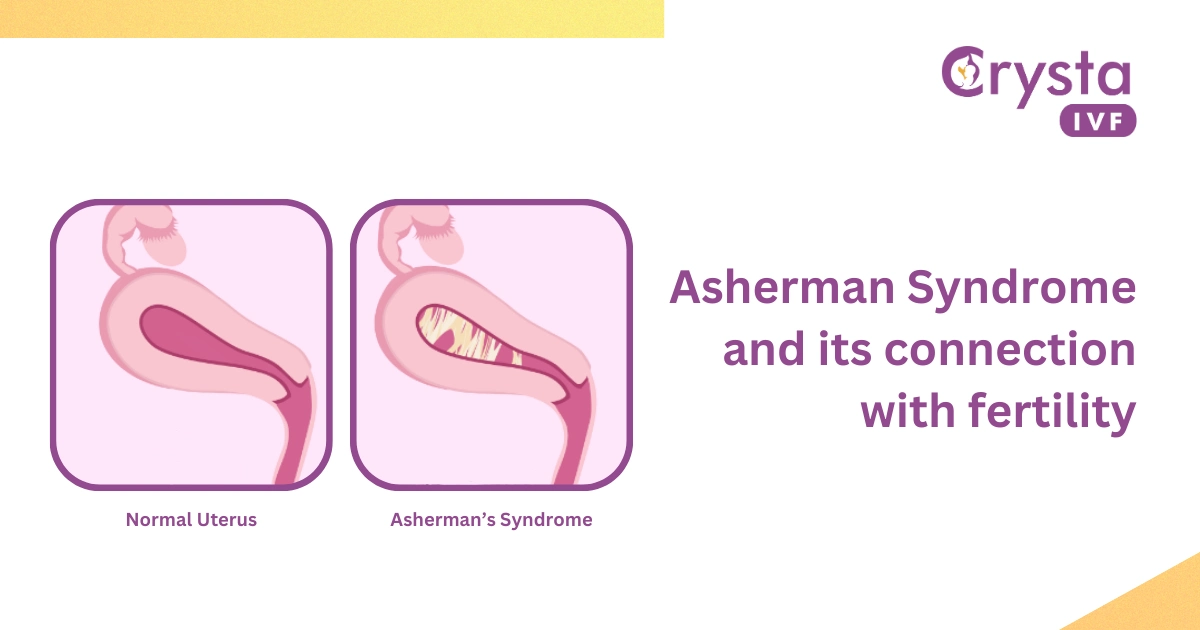For some, pregnancy is a new chapter of their lives, and for others, it can lead to recurrent miscarriages and trouble conceiving. The point is that the pregnancy journey itself is filled with so many ups and downs that it can even feel like a rollercoaster ride. Among the many complications that can arise, one of the less known yet significant ones is Asherman syndrome.
This rare but impactful reproductive health condition primarily affects women seeking fertility treatments like in-vitro fertilization (IVF). Unfortunately, due to less awareness and a lack of knowledge, Asherman’s syndrome often goes untreated or undiagnosed.
To shed light on the importance of Asherman’s syndrome, this article aims to provide a comprehensive overview, covering its causes, symptoms, diagnosis, and impact on IVF treatments.
Asherman’s Syndrome: An Overview
Also known as intrauterine adhesions or uterine synechiae, Asherman’s syndrome is a condition characterized by the formation of scar tissue (adhesions) inside the uterus. These adhesions result when the uterine lining (endometrium ) gets damaged or traumatized, leading to the fusion of the opposing walls of the uterine cavity. As a result, your uterine line becomes obstructed completely, or partially.
Symptoms of Asherman Syndrome
The symptoms of Asherman syndrome affect many people and result in few or no periods at all. Some women experience pain at the time of their period date but do not have any bleeding. Excessive pain and no bleeding could be a sign that you’re menstruating, but your blood fails to leave the uterus due to scar tissue blocks.
However, if your periods are irregular, sparse, or absent, it may be due to another condition such as:
- Obesity
- Pregnancy
- Sudden weight loss
- Stress
- Overexercising
- Taking a birth control pill
- Menopause
- Polycystic ovarian syndrome
If you face any of these complications, consult the top fertility expert at the best IVF centre in Delhi for an early diagnosis and accurate treatment plan.
Asherman Syndrome Causes
The primary causes of Asherman syndrome include:
Uterine surgery: Prior uterine surgeries, such as myomectomy (fibroid removal) or septum resection, may increase the risk of Asherman’s syndrome if there is any post-operative scarring.
Endometrial Infections: Infections such as endometriosis can damage the uterine lining and trigger the formation of adhesions.m
Dilation and curettage (D and C): It is a common procedure performed to remove uterine tissue following a miscarriage, abortion, or delivery. If not performed correctly, it can result in uterine scarring.
IUDs: Long-term use of intrauterine devices (IUDs) may also increase the risk of Asherman’s syndrome.
Diagnosis
Dilation and curettage (D and C): are common procedures performed to remove uterine tissue following a miscarriage, abortion, or delivery. If not performed correctly, it can result in uterine scarring.
Hysteroscopy: This minimally invasive procedure allows your healthcare provider to visualize the uterine cavity with the help of a thin, lighted instrument called a hysteroscope. It is the gold standard for diagnosing Asherman’s syndrome.
Transvaginal ultrasound: In some cases, an ultrasound may also help to detect abnormalities in the uterine cavity, But it doesn’t provide as detailed information as a hysteroscopy.
Besides that, you can also talk to your doctor about getting an Asherman syndrome test if you have:
- Complications in conceiving
- Recurrent miscarriages
- had uterine surgery, and your periods have become irregular or stopped
If not diagnosed at the earliest and taken action, Asherman syndrome can not only trouble your normal pregnancy but also make the situation worse for the possibility of success for the fertility treatment. Though the connection between Asherman syndrome and IVF is not often discussed, to examine its importance, let’s analyze the connection between Asherman syndrome and IVF.
Connection of Asherman syndrome and IVF
Asherman syndrome can significantly impact fertility treatments like IVF in several ways:
- Uterine receptivity: The scar tissue presence can make your uterine lining less receptive to embryo implantation, reducing the IVF cycle success rate.
- Embryo transfer difficulty: The adhesions can hinder your ability to transfer the embryos into the uterus during an IVF cycle.
- Increased miscarriage risk: Even if the implantation occurs, the adhesion’s presence increases the risk of miscarriage.
Treatment
Asherman’s syndrome can be treated with the help of a surgical procedure called operative hysteroscopy. Your doctor will attach small instruments to the end of the hysteroscope to remove adhesions. To perform the procedure successfully, you will be given general anesthesia.
After the surgical treatment, you will be prescribed antibiotics to prevent infection and estrogen medications to improve the quality of your uterine lining. The surgical procedure will be followed by a hysteroscopy test to check the operation’s effectiveness and ensure your uterus is free from adhesions.
However, there is a high chance that adhesions can reoccur following the treatment. To prevent this, your healthcare provider will wait a year before attempting to conceive, ensuring that no complications arise on your path to becoming a happy parent.
Moreover, treatment typically involves hysteroscopic surgery to remove the adhesions and restore the normal anatomy of the uterine cavity. In some cases, additional hormonal therapy is suggested to encourage endometrial regrowth.
Prevention
Asherman’s syndrome is a critical condition and should be approached with due seriousness. The most effective way to prevent the syndrome is by avoiding D and C procedures. In many cases, it is possible to opt for medical evacuation following a missed or incomplete miscarriage, retained placenta, or post-birth haemorrhage.
Nevertheless, if you require a D and C, the surgeon can take the help of ultrasound to lower the risk of uterus damage.
What’s the final outlook?
Asherman’s syndrome is a crucial condition that can make conception difficult. It also increases the risk of serious pregnancy complications. However, there’s no need to lose hope or worry excessively because this condition is preventable and treatable when diagnosed promptly. Therefore, if you suspect you may have Asherman’s syndrome or are experiencing fertility issues, consult a fertility specialist at the leading fertility chain of India, Crysta IVF, for a thorough evaluation and a personalized treatment plan. With the right care, many individuals with Asherman’s syndrome can fulfil their dreams of starting or expanding their families through IVF or other fertility treatments.





I have read soo many articles or reviews concerning the blogger lovers but
this post is really a pleasant article, keep it up.
Thank you. Glad you found this blog post helpful. Stay tuned for more informative blogs.